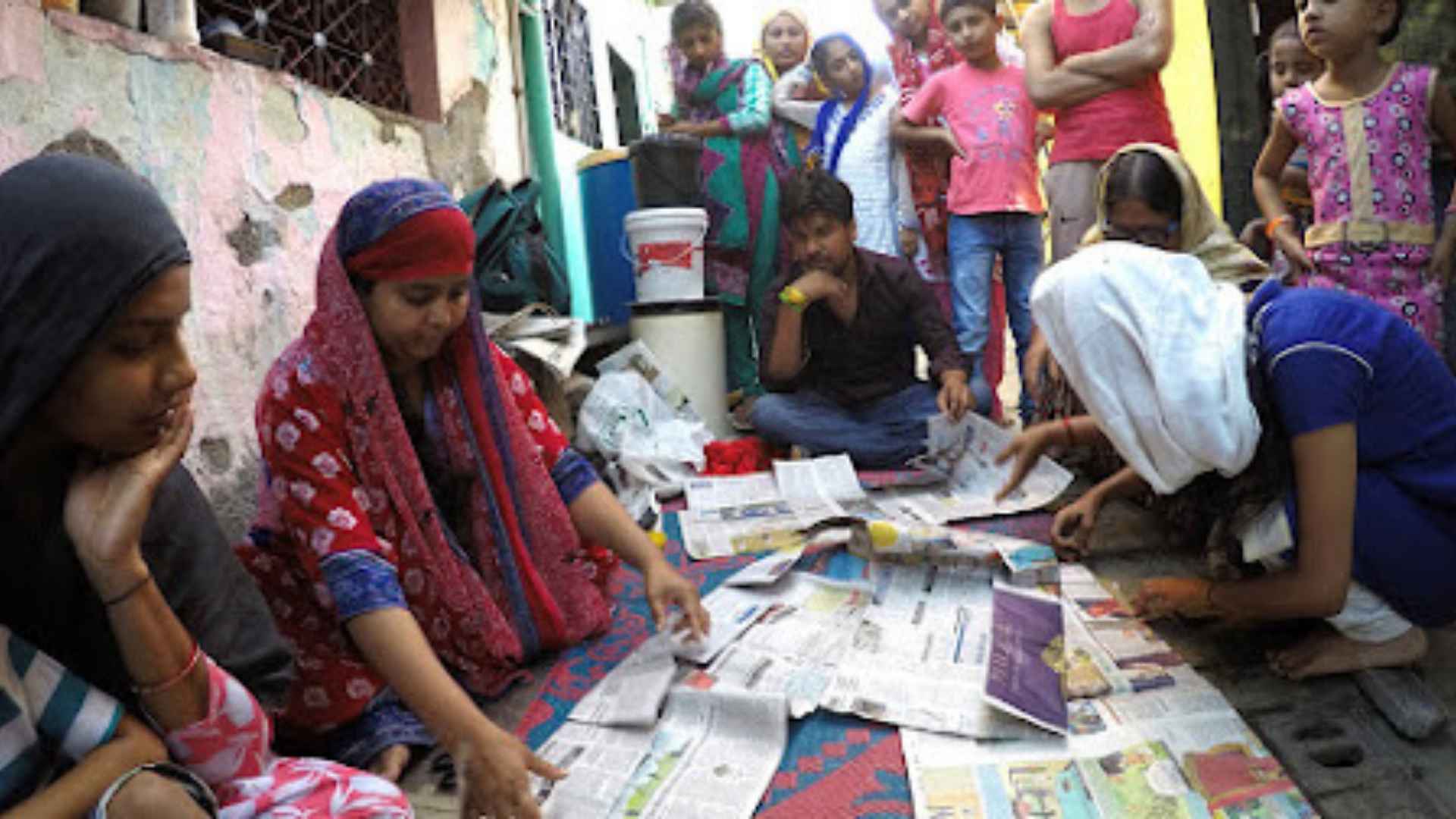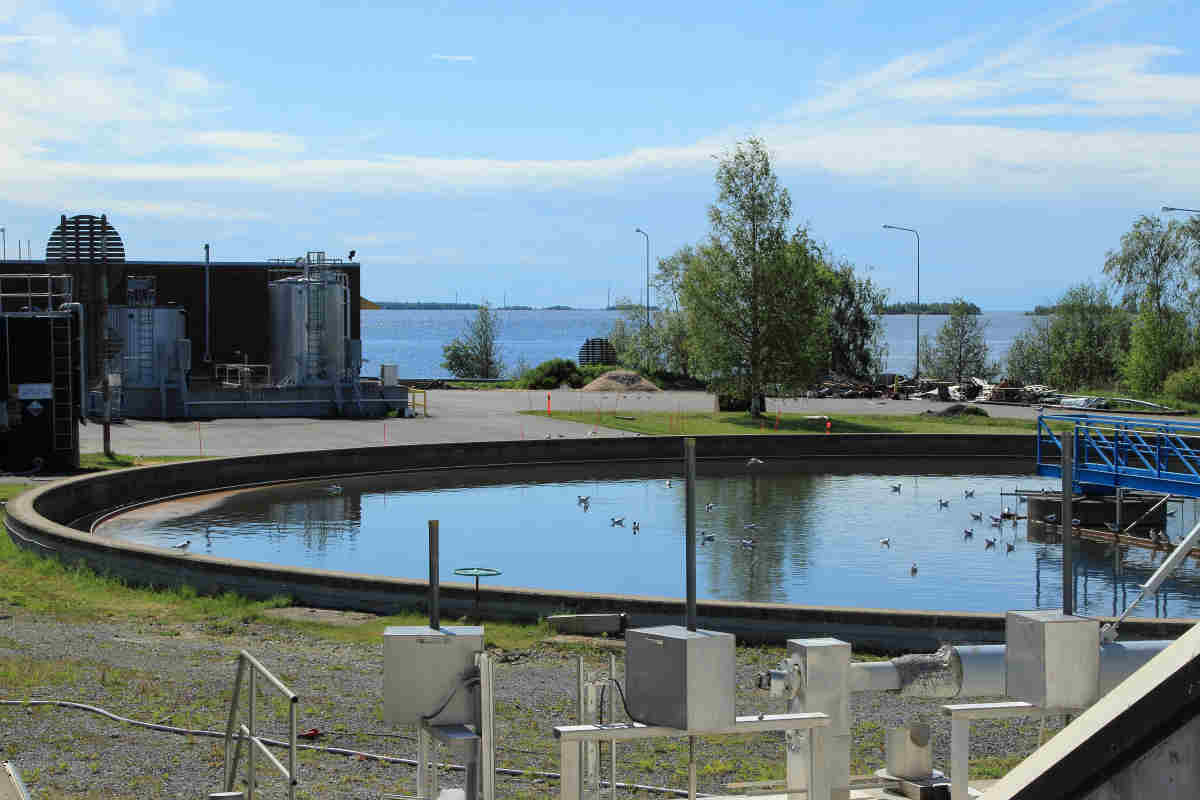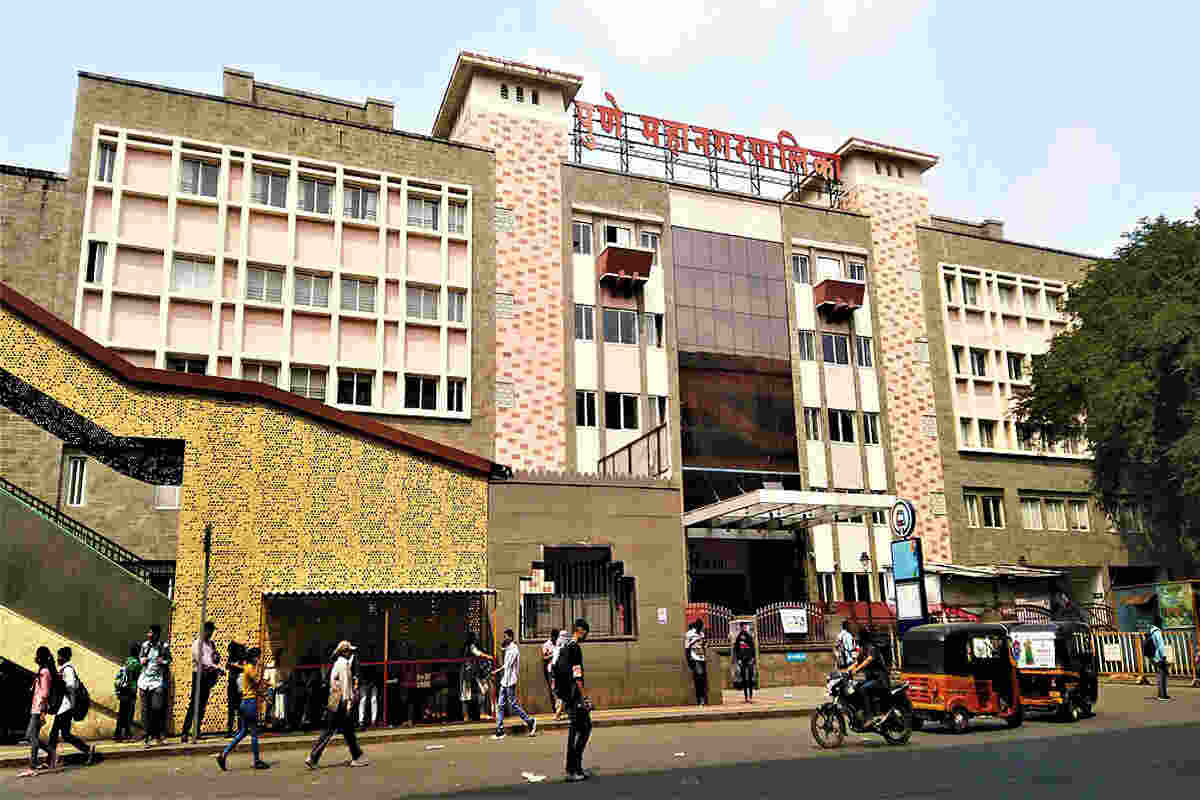In today’s world, the mounting waste crisis has become an alarming global challenge, posing severe socioeconomic and environmental threats. According to the World Bank, the world generates approximately 2.01 billion tonnes of municipal solid waste annually, with at least 33% of it mismanaged through open dumping or burning. This mismanagement not only contaminates air, soil, and water but also exacerbates climate change through methane emissions from landfills.
Amidst this crisis, the concept of the circular economy has gained traction as a viable and sustainable alternative to the traditional “take-make-dispose” consumption model. The circular economy promotes resource efficiency by designing waste out of the system, extending the lifecycle of products through recycling, reusing, and upcycling.
Upcycling, in particular, stands out as a transformative practice—it involves reimagining waste into new, valuable products, reducing landfill contributions while creating economic opportunities. This not only reduces the environmental footprint but also empowers individuals by enabling them to monetize waste.
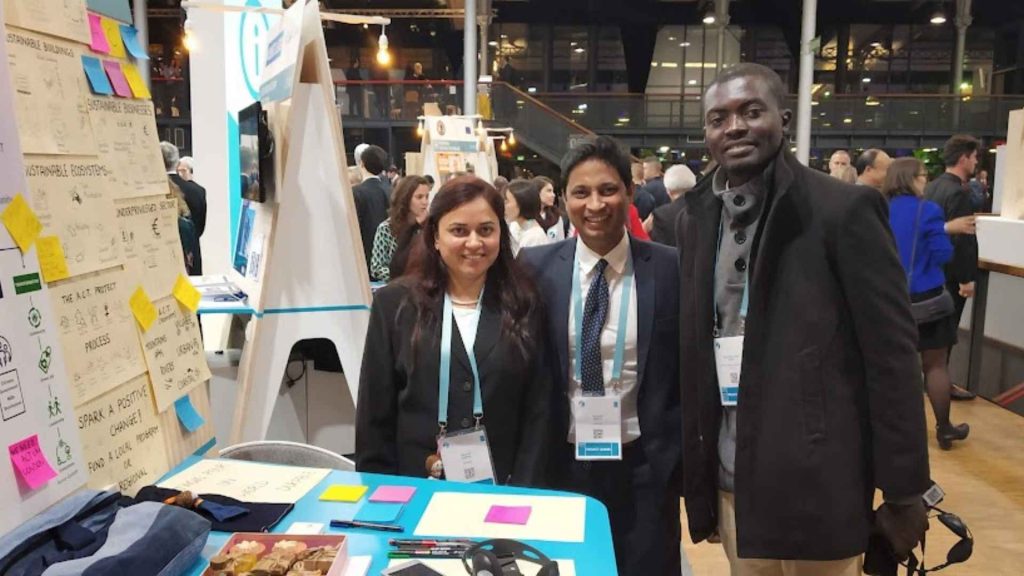
In this context, Earth5R, a global environmental organization, has emerged as a trailblazer in combating waste and fostering sustainable livelihoods. Founded in 2014, Earth5R focuses on community-driven sustainability projects that address environmental issues while promoting social welfare.
The organization’s core mission revolves around empowering local communities by teaching them to upcycle waste into functional, sellable products and establishing micro-enterprises to generate stable income. Through its innovative model, Earth5R not only diverts waste from landfills but also creates a circular income cycle, where waste becomes a source of livelihood.
This article explores how Earth5R’s upcycling-based micro-enterprises are promoting sustainable livelihoods. It will delve into the science behind upcycling, the socioeconomic impact of micro-enterprises, and highlight real-world case studies that demonstrate measurable outcomes.
Understanding Sustainable Livelihoods through Upcycling
Upcycling—a creative and sustainable form of waste management—plays a pivotal role in fostering sustainable livelihoods by transforming discarded materials into valuable products. Unlike conventional recycling, which often degrades the quality of materials, upcycling enhances the value of waste by repurposing it into functional, aesthetic, and marketable items.
This process not only reduces waste generation but also creates economic opportunities by establishing local micro-enterprises. In regions where poverty and unemployment are prevalent, upcycling offers a dual advantage: waste reduction and income generation.
The Science behind Upcycling: Environmental and Economic Impact
Upcycling is not merely a creative craft—it is backed by scientific evidence demonstrating its positive environmental and economic impact. According to a 2020 study published in the Journal of Cleaner Production, upcycling reduces carbon emissions by up to 70% compared to manufacturing new products. This is because the process minimizes the need for virgin raw materials such as plastic, wood, and fabric, which are resource-intensive to produce.
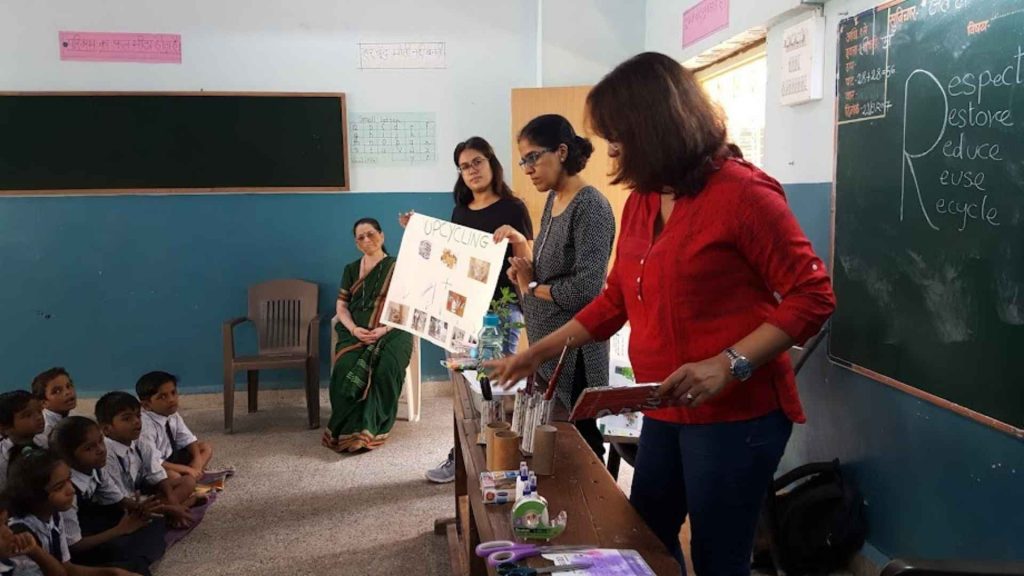
Furthermore, upcycling significantly lowers the waste footprint. A report by the Ellen MacArthur Foundation revealed that upcycling textiles alone could prevent 1.5 million tonnes of waste from entering landfills annually. The environmental benefits extend beyond waste reduction—upcycling also conserves water, energy, and raw materials, making it an essential practice in circular economy models.
Challenges in Conventional Waste Management: Why Upcycling Is a Better Solution
Traditional waste management methods—landfilling, incineration, and conventional recycling—pose significant environmental and economic challenges. Landfilling, for instance, is the most common method of waste disposal, yet it is highly unsustainable. Landfills release methane gas, a greenhouse gas that is 25 times more potent than carbon dioxide in terms of global warming potential.
Conventional recycling, though seemingly eco-friendly, also has limitations. Downcycling, a common practice in recycling, degrades the quality of materials, making them less valuable over time. For example, recycled plastic bottles cannot be reused indefinitely for the same purpose due to the decline in polymer strength.
In contrast, upcycling offers a more sustainable alternative by extending the lifecycle of waste materials without compromising their quality. Upcycled products, such as furniture made from reclaimed wood or bags crafted from discarded fabric, retain or even enhance their market value. This makes upcycling not only an environmentally responsible practice but also an economically viable solution.
Earth5R’s Upcycling Model: Turning Waste into Opportunity
Earth5R’s upcycling-driven sustainable livelihoods model offers a compelling blueprint for transforming waste into economic opportunities. The organization works with local communities, waste pickers, and artisans to train them in upcycling techniques, equipping them with practical skills in design, production, and business management.
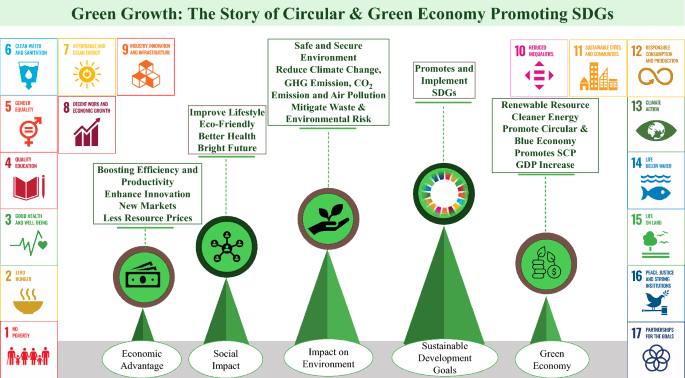
This image depicts the interconnectedness of green growth, circular economy, and sustainable development goals, highlighting their positive impacts on various aspects of society and the environment. It visually represents how economic advantages, social impacts, and environmental considerations contribute to achieving a green economy and implementing the SDGs.
For example, in Mumbai, India, Earth5R launched an initiative where women from low-income neighborhoods were trained to upcycle textile waste into handbags, wallets, and home decor items. Earth5R’s upcycling model stands out for its innovative techniques and eco-friendly methods. The organization uses natural, non-toxic dyes and promotes low-energy production processes to minimize the carbon footprint.
A Step Toward a Circular and Inclusive Economy
Earth5R’s upcycling initiatives exemplify how sustainable livelihoods can redefine waste as a source of opportunity. By promoting skill development, reducing environmental impact, and fostering entrepreneurship, Earth5R’s model provides a scalable and replicable solution for other regions. It not only addresses the global waste crisis but also empowers individuals with self-sustaining economic opportunities, making it a powerful tool in the transition toward a circular and inclusive economy.
Micro-Enterprises as a Vehicle for Sustainable Livelihoods
In a rapidly evolving global economy, micro-enterprises have emerged as powerful drivers of local economic growth and self-reliance, particularly in marginalized and low-income communities. Defined by the International Labour Organization (ILO) as small businesses with fewer than 10 employees, micro-enterprises are often the backbone of rural and informal economies, providing stable income sources and fostering entrepreneurship.
The significance of micro-enterprises extends far beyond job creation. They play a vital role in promoting financial independence by enabling individuals to transform their skills into sustainable income streams. According to a World Bank report, micro-enterprises contribute to 60-70% of total employment in low- and middle-income countries.
Upcycling and Micro-Enterprises: A Circular Economy in Action
The connection between upcycling and micro-enterprises is a natural fit in the push toward circular economies. Upcycling, which involves repurposing waste materials into valuable products, provides micro-entrepreneurs with a low-cost resource supply while promoting sustainability. This model reduces dependency on virgin materials, cuts production costs, and enhances the profitability of small-scale businesses.
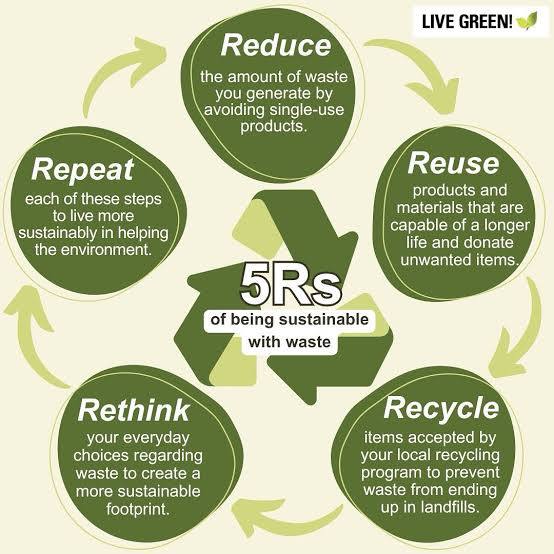
This image illustrates the “5Rs” of sustainability – Reduce, Reuse, Recycle, Rethink, and Repeat – as a circular process for managing waste and living green. It emphasizes how each step contributes to a more sustainable lifestyle and helps protect the environment.
By integrating waste management into micro-enterprise development, Earth5R creates a dual-impact model: reducing waste while fostering entrepreneurship. This approach transforms what is typically seen as a burden (waste) into a resource (income-generating product), providing micro-entrepreneurs with consistent raw material supply without significant production costs.
Skill Development and Empowerment: Laying the Foundation for Sustainable Livelihoods
The impact of skill-building programs on livelihood security is well documented. A 2021 study by the International Labour Organization (ILO) found that vocational training in craft-based skills increased income potential by 35-40% for women in rural India. Similar evidence supports Earth5R’s initiatives.
In Mumbai, the organization trained over 150 women from economically weaker backgrounds in upcycling fabric waste into marketable goods. After completing the program, 70% of the participants reported stable income generation, while others started their own micro-businesses, employing family members.
Real-World Case Studies: Micro-Enterprises Driving Change
In Pune, India, Earth5R collaborated with local artisans and waste-pickers to create a micro-enterprise that upcycles discarded plastic into designer home decor products. The initiative not only provided artisans with stable employment but also gave waste-pickers a new source of income by selling cleaned and sorted plastic waste directly to the micro-enterprise.
Another inspiring case is from Nairobi, Kenya, where Earth5R partnered with a local NGO to train youth from underserved neighborhoods in upcycling discarded wood pallets into furniture and home decor items. The micro-enterprise model enabled the youth to sell their products through local craft markets and online platforms, earning an average monthly income of $200-300 USD, significantly above the local minimum wage.
A Scalable and Sustainable Solution
Earth5R’s model proves that micro-enterprises powered by upcycling offer a scalable solution to both poverty and waste management challenges. By combining skill development with eco-conscious business practices, the model promotes financial stability and environmental sustainability in tandem.
As micro-enterprises grow, they create localized economic ecosystems where waste collection, upcycling, and product sales generate stable income cycles. This not only reduces unemployment but also fosters circular economy practices at the grassroots level, making it a replicable and sustainable model for other regions.
Socioeconomic and Environmental Impact of Earth5R’s Model
Economic Benefits: Generating Income and Creating Jobs
One of the most tangible impacts of Earth5R’s model is its economic empowerment of marginalized communities through job creation and income generation. By establishing upcycling-based micro-enterprises, the organization provides individuals—particularly from low-income backgrounds and vulnerable groups—with sustainable employment opportunities.
The economic benefits extend beyond individual income. The model also promotes local economic ecosystems by involving waste collectors, artisans, and small-scale retailers. Waste pickers, for instance, can sell cleaned and sorted waste to Earth5R-led micro-enterprises, creating a secondary income stream. This circular flow of materials and money fosters financial stability at the grassroots level, turning waste into a valuable economic asset.
Social Empowerment: Fostering Inclusion and Gender Equality
In rural Maharashtra, Earth5R partnered with local self-help groups (SHGs) to train women in upcycling plastic and fabric waste into reusable products. Through the initiative, these women not only gained financial independence but also increased their social standing. Many participants reported that their contributions to household income gave them a greater voice in family decision-making—a significant shift in traditionally patriarchal societies.
The model also fosters community cohesion and skill enhancement by bringing together diverse groups of people to collaborate on sustainability-driven micro-enterprises. In Bangalore, India, Earth5R launched an initiative that involved local waste pickers, artisans, and small-scale business owners.
Environmental Impact: Reducing Waste and Carbon Emissions
According to Earth5R’s 2023 sustainability report, the organization diverted over 300 tonnes of waste from landfills through its upcycling initiatives. By repurposing plastic, textile, and e-waste, Earth5R prevented the release of approximately 500 metric tonnes of CO2 equivalent emissions, based on calculations from the Environmental Protection Agency’s (EPA) waste reduction metrics.
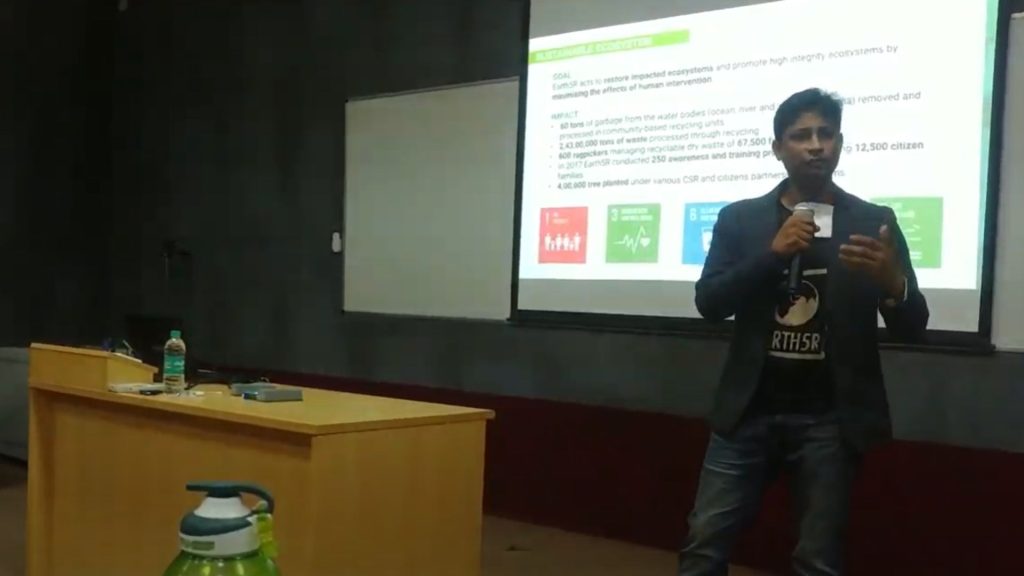
The impact of this waste reduction is not just quantitative—it also mitigates soil, water, and air pollution. For example, Earth5R’s e-waste upcycling project in Mumbai prevented hazardous substances such as lead, mercury, and cadmium from leaching into the environment. The initiative collected and repurposed over 2,000 discarded electronic items, transforming them into functional products such as clocks, lamps, and decorative pieces.
Scientific Research and Reports: Validating the Model’s Impact
A 2020 report by the International Labour Organization (ILO) emphasized that micro-enterprises reduce unemployment and foster local economic resilience by providing low-barrier entry jobs. The report found that individuals engaged in micro-enterprises experienced higher income stability and were more likely to diversify their revenue streams, making them less vulnerable to economic shocks.
On the environmental front, a study by the Ellen MacArthur Foundation revealed that circular economy initiatives like upcycling could reduce global waste by 45% by 2030, significantly lowering resource depletion and pollution levels. Earth5R’s initiatives directly align with these findings, demonstrating that upcycling-based micro-enterprises contribute to larger global sustainability goals.
Case Studies and Real-World Applications of Earth5R’s Model
Transforming Textile Waste into Livelihoods: Mumbai’s Upcycling Revolution
One of Earth5R’s flagship projects took place in Mumbai, India, where the organization partnered with local self-help groups (SHGs) to transform discarded textile waste into eco-friendly products. The implementation process began with capacity-building workshops, where women were trained in textile sorting, fabric cleaning, and product design.
The outcomes of the project were remarkable. According to Earth5R’s impact report, the initiative led to the upcycling of over 3,000 kg of textile waste within the first year. The women involved reported an average income increase of 40%, allowing them to cover household expenses and invest in their children’s education.
Upcycling E-Waste into Functional Products: Bengaluru’s Circular Innovation
Earth5R’s project trained local youth and waste-pickers in safe e-waste handling, disassembly, and creative repurposing. The participants learned to transform discarded circuit boards, wires, and electronic parts into functional and aesthetic products, including clocks, lamps, keychains, and decorative items.
The impact metrics were significant. Over the course of 12 months, the project upcycled more than 2,500 kg of e-waste, preventing it from ending up in landfills. According to Earth5R’s data, the initiative reduced approximately 4 metric tonnes of CO2-equivalent emissions, considering the energy-intensive nature of traditional e-waste disposal methods.
Comparative Analysis: How Earth5R’s Model Stands Out
While upcycling and micro-enterprises are not new concepts, Earth5R’s model stands out for its holistic and scalable approach. Unlike traditional livelihood programs, which often focus on singular outcomes (such as income generation or waste management), Earth5R integrates both socioeconomic and environmental goals into a unified framework.
What truly makes Earth5R’s model unique is its emphasis on skill-building and self-reliance. By equipping individuals with marketable skills, the model promotes long-term economic sustainability, reducing dependence on external aid. Additionally, Earth5R’s focus on data-driven impact assessments allows the organization to quantify its success, making the model transparent and replicable.
Challenges and Opportunities for Scaling Earth5R’s Model
Challenges in Implementing Upcycling and Micro-Enterprises
According to a 2022 report by the Global Impact Investing Network (GIIN), only 7% of global impact investments are directed toward waste management and circular economy projects, highlighting the funding gap in this sector. Without consistent access to micro-financing, grants, or impact investments, expanding Earth5R’s micro-enterprise network remains a challenge.
The inconsistency in the quality and availability of waste makes it difficult for micro-enterprises to maintain steady production cycles. In regions with weak waste segregation infrastructure, upcyclers face the added burden of sorting and cleaning waste, which increases operational costs and time.
Opportunities for Growth: Scaling Earth5R’s Model
Despite the challenges, significant opportunities exist for scaling Earth5R’s model. One of the most promising avenues is through strategic partnerships with corporations and government bodies. By collaborating with corporate sustainability programs, Earth5R can access larger waste streams, funding, and broader market channels.
For example, partnerships with retail giants like IKEA or H&M, which already have upcycling and take-back initiatives, could provide Earth5R with consistent material supplies and retail platforms to market their products. Similarly, government collaborations can lead to policy support, subsidies, and access to municipal waste resources, making scaling more feasible.
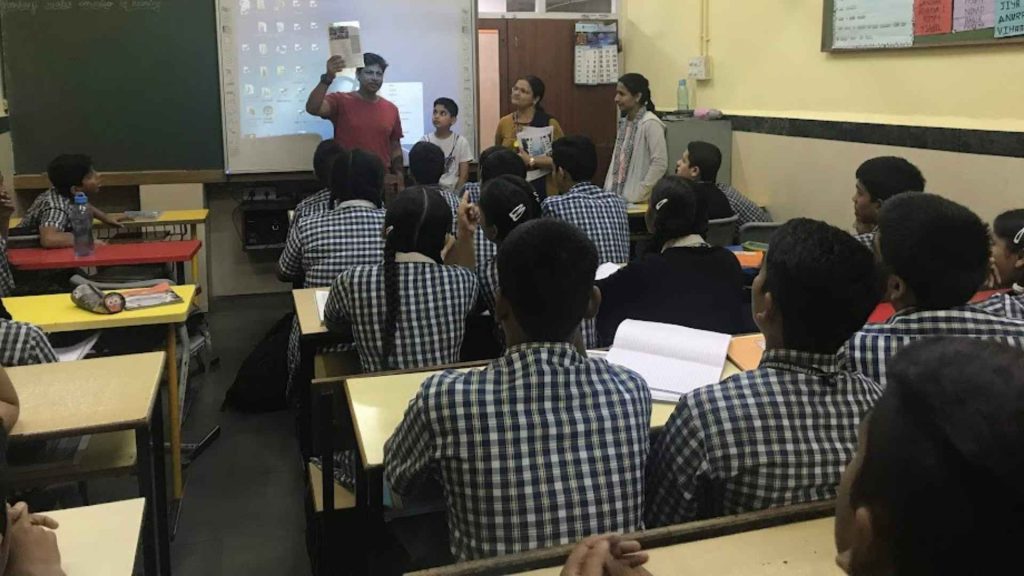
According to the World Bank, low- and middle-income countries generate 90% of the world’s waste growth, but have limited formal waste management systems. By entering emerging markets in Asia, Africa, and Latin America, Earth5R can both expand its impact and create new livelihood opportunities in regions where waste is abundant but underutilized.
Scientific Evidence and Projections: The Future of Upcycling-Based Micro-Enterprises
According to a 2022 study published in Nature Sustainability, circular micro-enterprises have the potential to reduce global waste by 45% by 2030, while creating millions of new jobs in low-income regions. The study also highlighted that small-scale upcycling businesses can generate up to 80% lower carbon emissions compared to large-scale recycling plants, making them both eco-friendly and economically viable.
Projections from the International Labour Organization (ILO) suggest that green micro-enterprises could create 24 million new jobs globally by 2030, particularly in developing nations, where informal waste sector workers could be formalized into sustainable upcycling ventures.
A Scalable and Sustainable Future
Despite the financial, logistical, and market-related challenges, the opportunities for scaling Earth5R’s model are substantial. Through corporate partnerships, technological innovation, and regional expansion, Earth5R can replicate its successful micro-enterprise model in new geographies, creating sustainable livelihoods and reducing waste footprints.
As scientific evidence increasingly supports the circular economy, models like Earth5R’s have the potential to reshape global waste management practices while empowering vulnerable communities with stable, eco-friendly income streams.
FAQs on Earth5R’s Sustainable Livelihoods Model through Upcycling and Micro-Enterprises
What is Earth5R’s Sustainable Livelihoods Model?
Earth5R’s Sustainable Livelihoods Model is a community-driven initiative that promotes economic empowerment through upcycling and micro-enterprises. It focuses on transforming waste into marketable products, creating income-generating opportunities for marginalized groups while reducing environmental impact.
How does Earth5R integrate upcycling into sustainable livelihoods?
Earth5R trains local communities to upcycle waste materials into reusable products, such as bags, accessories, and home decor. These products are then sold through micro-enterprises, providing sustainable income while reducing landfill waste.
What types of waste does Earth5R upcycle?
Earth5R upcycles a variety of waste materials, including plastic, fabric scraps, paper, and electronic waste. The organization transforms these discarded materials into high-quality, reusable products.
How do micro-enterprises contribute to sustainable livelihoods?
Micro-enterprises allow individuals and small groups to create and sell upcycled products, generating consistent income. This model empowers people with entrepreneurial skills, making them financially self-reliant.
Who benefits from Earth5R’s sustainable livelihoods model?
The model primarily benefits marginalized communities, women, and low-income groups by providing them with skill development, employment opportunities, and income stability.
What is the environmental impact of Earth5R’s upcycling model?
By reducing waste and promoting reuse, Earth5R’s model lowers landfill contributions, cuts carbon emissions, and conserves natural resources. It promotes a circular economy by keeping materials in use for longer.
How does Earth5R train communities for upcycling?
Earth5R conducts hands-on workshops and training programs to teach community members how to transform waste into sellable products. The training includes crafting, design, and business skills.
What are some examples of products made through upcycling?
Earth5R’s upcycling initiatives produce eco-friendly bags, wallets, jewelry, home decor items, and even furniture from discarded materials, making waste valuable again.
How does Earth5R support the micro-enterprises financially?
Earth5R provides seed funding, marketing support, and access to sales platforms to help micro-enterprises scale their operations and reach larger customer bases.
What role does technology play in Earth5R’s sustainable livelihoods model?
Earth5R uses digital platforms for product promotion and sales, enabling micro-enterprises to access larger markets. It also uses data analytics to measure impact and optimize upcycling processes.
How does Earth5R ensure product quality from upcycled materials?
The organization follows strict quality control standards during the upcycling process, ensuring that the products are durable, safe, and aesthetically appealing.
What impact does Earth5R’s model have on gender equality?
Earth5R actively promotes women’s empowerment by involving them in upcycling and micro-enterprise ventures, providing financial independence and leadership opportunities.
How does Earth5R collaborate with corporations and NGOs?
Earth5R partners with corporates, NGOs, and government bodies for funding, scaling, and promoting upcycling-based micro-enterprises, enhancing its reach and impact.
Can Earth5R’s model be replicated in other regions?
Yes, Earth5R’s sustainable livelihoods model is scalable and adaptable. It can be replicated in both rural and urban areas by tailoring it to local waste streams and market demands.
How does Earth5R measure the success of its sustainable livelihoods model?
The organization tracks quantitative metrics such as waste diverted from landfills, number of micro-enterprises created, income levels of beneficiaries, and carbon footprint reduction.
What challenges does Earth5R face in implementing this model?
Challenges include limited access to funding, logistical issues in waste collection, and market acceptance of upcycled products. However, Earth5R tackles these through partnerships and awareness campaigns.
What are the long-term goals of Earth5R’s sustainable livelihoods model?
Earth5R aims to scale the model globally, involve more communities, and create a larger impact by reducing waste, promoting circular economy practices, and empowering disadvantaged groups.
How can individuals support Earth5R’s sustainable livelihoods initiatives?
Individuals can support by purchasing upcycled products, volunteering, or donating to Earth5R. Spreading awareness about the benefits of upcycling also helps promote the initiative.
What scientific evidence supports the benefits of upcycling and micro-enterprises?
Numerous studies show that upcycling reduces environmental impact by lowering resource extraction and waste production. Micro-enterprises, on the other hand, are proven to boost local economies and reduce poverty.
How can corporations collaborate with Earth5R on this model?
Corporations can collaborate by sponsoring upcycling projects, funding micro-enterprises, or integrating Earth5R’s products into their supply chains, thereby promoting sustainable business practices.
Call to Action: Scaling Earth5R’s Impact for a Sustainable Future
The success of Earth5R’s model is a powerful testament to the transformative potential of upcycling-based micro-enterprises. However, for this model to create large-scale and lasting change, it requires collaboration and commitment from governments, corporations, and individuals alike. The fight against waste pollution and economic disparity cannot be driven by grassroots organizations alone—it demands a coordinated effort from multiple stakeholders.
Corporations have a crucial role to play in expanding Earth5R’s impact. By partnering with circular economy initiatives, companies can integrate upcycled products into their supply chains, creating consistent demand for sustainable goods. For example, if fashion brands collaborated with Earth5R, they could incorporate upcycled textiles into their collections, reducing their dependence on virgin resources.
Such partnerships would not only enhance corporate sustainability but also generate stable income for the micro-enterprises Earth5R supports. According to a 2023 McKinsey report, companies with strong ESG (environmental, social, and governance) practices experience 14% higher long-term growth rates, demonstrating that sustainability and profitability go hand in hand.
Policymakers also need to step up and create regulatory frameworks that incentivize sustainable livelihoods. By introducing subsidies, tax benefits, and grants for upcycling ventures and green micro-enterprises, governments can stimulate local economies while promoting waste reduction.
On an individual level, public participation and conscious consumerism are essential to sustaining the growth of circular micro-enterprises. Consumers can directly support upcycled products, driving market demand and encouraging more entrepreneurs to enter the sector.
Choosing upcycled fashion, home decor, or accessories over mass-produced alternatives sends a clear signal to businesses that sustainability matters. Moreover, individuals can advocate for sustainable policies, participate in local waste collection and upcycling workshops, and support community-driven micro-enterprises.
– Authored by Mridu Mishra

